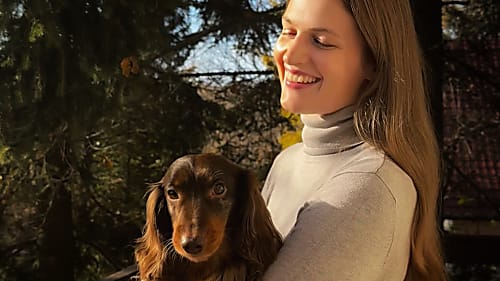The Advantages of LimesVet Services for Your Veterinary Practice
Precise planning, safer surgeries! Integrate 3D technology into your veterinary practice and take advantage of the innovative solutions we offer.
Vertebral column stabilisation
Dr Csaba Pajor, affiliated with the Animal Hospital in Vác asked for our help in connection with a complex operation. Dorisz, a Labrador retriever, had to undergo MR and CT examinations due to her difficulties in using her hind limbs. It turned out that her symptoms are caused by a tumour of significant size which was present in her vertebral canal and partly interweaved the exiting nerves. The CT image also showed that the tumour thinned down the lumbar vertebra in which it was growing. It complicated the case even further because a potential operation (during which a part of the vertebra has to be removed for the sake of opening the vertebral canal to remove the tumour) would have weakened the remaining bones to such an extent that they could not have endured any major load (and could have resulted in a vertebral fracture). Therefore, the surgeon decided to attach the preceding and the succeeding vertebrae to each other on both sides. For this he had to insert screws into the vertebral bodies. This task requires a high degree of precision because the surgeon has to concentrate on both the appropriate angle and depth: if he does not drill the place of the screws accurately, attachment will not be satisfactory (the system will be instable) or the surrounding vessels and nerves could be damaged. So, he assigned LimesVet the task of creating the digital and print model of the bones in the particular area. Then, we also had to design customised drilling guides which serve the purposes of locating both the precise spot and angle for the surgical intervention. As the first step of the design process, we modelled the bones and applied 3D printing. Then, we designed the drilling guides and finally, we prepared a positioning guide for the stabilizing metal implant. As a result of the operation lasting for several hours, the tumour was removed from Dorisz’s vertebral canal, the drills were carried out with the help of the guides and the stabilising metal implants were also put in their places. Now, Dorisz is feeling well and she can walk much better.

Precise planning, safer surgeries! Integrate 3D technology into your veterinary practice and take advantage of the innovative solutions we offer.

The combined application of custom 3D-printed and traditional implants represents a significant advancement in treating complex orthopedic conditions.

During the COVID-19 lockdowns, many people sought emotional support amid isolation and uncertainty. However, home office opened new opportunities for a young woman: finally, she could adopt a puppy. In the interview she talks about how thanks to this her life changed, how she found new social relationships and how her dog helped her maintain her mental health during this difficult period.
Patient-specific surgical equipment
Patient-specific surgical equipment
Patient-specific surgical equipment